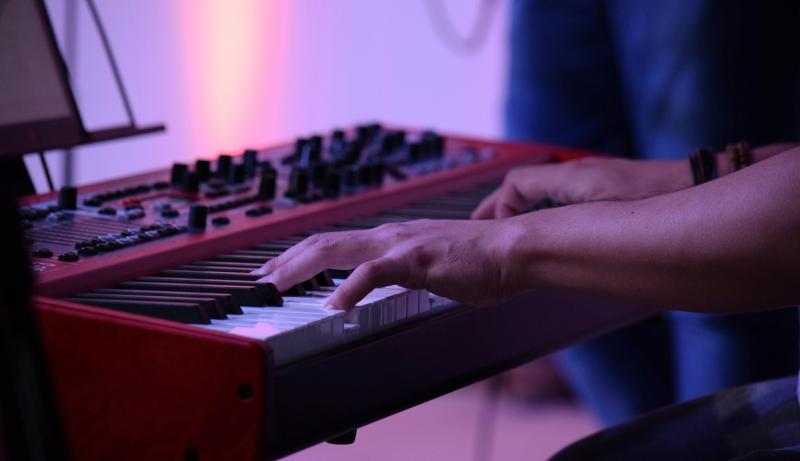Learning to play the piano is a rewarding experience, and thanks to modern digital pianos, teaching yourself piano has never been easier. Whether you're a complete beginner or looking to sharpen your skills, a digital piano offers a wealth of features and tools to help you learn effectively at your own pace. In this guide, we’ll explore the best strategies and features that can make teaching yourself piano with a digital piano both enjoyable and productive.
1. Choosing the Right Digital Piano for Self-Learning
The first step in teaching yourself piano is selecting the right digital piano. While any digital piano can technically work, certain models come with features that are especially helpful for self-learners.
Weighted Keys for a Realistic Feel
If you’re serious about learning, look for a digital piano with fully weighted keys. This mimics the feel of an acoustic piano, helping you develop proper finger strength and technique. Weighted keys also allow you to better control dynamics, which is an essential part of musical expression.
Built-in Learning Tools
Many digital pianos come with built-in learning tools such as metronomes, recording capabilities, and even guided lessons. These features can be incredibly helpful for structuring your practice sessions and tracking your progress over time. Models from brands like Yamaha and Casio often come equipped with such tools, making them ideal for beginners teaching themselves.
2. Start with the Basics: Learn Finger Placement and Posture
Before diving into scales or songs, focus on learning proper finger placement and posture. This foundational step ensures you develop good habits from the start, avoiding strain and improving your technique over time.
Hand Position and Finger Numbering
One of the first things to learn is the correct hand position and finger numbering system. In piano notation, the fingers of each hand are numbered from 1 to 5, with the thumb being number 1. Understanding this system will make it easier to follow sheet music and tutorials. Place your fingers naturally over the keys, keeping them curved and relaxed, with your elbows slightly above the keys.
Sitting at the Correct Height
Your posture is just as important as finger placement. Sit at a height where your forearms are parallel to the ground when your fingers are on the keys. This will help you play more comfortably and reduce the risk of strain during longer practice sessions.
3. Take Advantage of Online Tutorials and Apps
One of the biggest benefits of learning piano with a digital piano is the ability to access online tutorials and learning apps. Many digital pianos have Bluetooth or USB connectivity, allowing you to connect to various educational platforms that can guide you through lessons step by step.
Popular Piano Learning Apps
Apps like Simply Piano, Flowkey, and Yousician offer structured lessons for beginners, often with real-time feedback as you play. These apps are designed to break down the learning process into manageable chunks, helping you master everything from basic note reading to more advanced techniques. Many of these apps also allow you to track your progress over time, motivating you to keep practicing.
YouTube Tutorials
YouTube is another excellent resource for free piano tutorials. Channels like Pianote and HDpiano offer lessons for beginners, covering a wide range of topics from scales and chords to popular songs. You can find tutorials tailored to your skill level and preferred learning style, making it easier to follow along and learn at your own pace.
4. Learn to Read Music: A Crucial Skill for Self-Taught Pianists
While many people are eager to jump straight into playing songs by ear, learning to read sheet music is a critical skill that will expand your ability to play a wide range of music. The ability to read music gives you access to virtually any song, allowing you to play classical pieces, jazz standards, and more.
Start with Basic Note Reading
Begin by learning the basics of the grand staff, which is used in piano music. The grand staff consists of two staves: the treble clef for the right hand and the bass clef for the left hand. Familiarize yourself with the names of the lines and spaces for each clef, and practice identifying notes on the staff with their corresponding keys on the piano.
Practice Sight-Reading
Once you’re comfortable reading basic notes, start practicing sight-reading. Begin with simple pieces that use only a few notes, and gradually work your way up to more complex music. Sight-reading is a skill that improves with practice, so include it regularly in your sessions.
5. Focus on Scales and Chords for Finger Strength and Technique
Scales and chords are the building blocks of music and are essential for improving your finger strength and dexterity. Incorporating scale and chord practice into your routine will help you play more fluidly and comfortably as you progress to more advanced pieces.
Major and Minor Scales
Start by practicing major and minor scales in different keys. Playing scales helps you develop muscle memory and improve finger coordination. Begin slowly, focusing on accuracy, and gradually increase your speed as you become more comfortable.
Basic Chord Progressions
Chords are another essential component of piano music. Begin with basic triads (three-note chords) and practice transitioning between common chord progressions, such as I-IV-V-I in major and minor keys. This will not only improve your technique but also help you understand the structure of many songs.
6. Use the Recording Feature to Track Your Progress
Most digital pianos come with a built-in recording feature, which can be a valuable tool for self-taught pianists. Recording yourself playing allows you to listen back and identify areas for improvement, such as timing, dynamics, and accuracy.
Record and Review Your Practice Sessions
Try recording short segments of your practice sessions, such as scales, chords, or small sections of a song you’re working on. Listen back to your recordings and make note of areas where you can improve. This method of self-assessment helps you track your progress and refine your playing over time.
Track Your Growth Over Time
Recording yourself regularly also allows you to track your long-term progress. Comparing older recordings with more recent ones can be incredibly motivating, as it gives you a clear picture of how much you’ve improved.
7. Practice Consistently: The Key to Mastery
Consistency is one of the most important factors when it comes to teaching yourself piano. It’s better to practice for a short period each day than to have long, sporadic practice sessions. Regular practice helps reinforce muscle memory, improves your technique, and builds confidence.
Set a Practice Schedule
Create a consistent practice schedule that fits into your daily routine. Aim for at least 20-30 minutes of focused practice each day, gradually increasing the time as you become more comfortable. Break your practice time into sections—spend a few minutes on scales, a few minutes on sight-reading, and the rest on learning new songs or pieces.
Stay Patient and Persistent
Teaching yourself piano takes time and patience. There will be moments of frustration, but staying persistent is key. Celebrate small victories, such as mastering a scale or learning a new chord, and use those achievements to motivate you to keep going.
Final Thoughts on Self-Teaching with a Digital Piano
Teaching yourself piano using a digital piano is an accessible and rewarding way to learn the instrument. By choosing the right digital piano, taking advantage of learning tools and apps, and maintaining consistent practice, you can steadily progress toward becoming a confident and skilled pianist. With the help of modern technology and a structured approach, learning piano on your own can be both enjoyable and highly effective.



